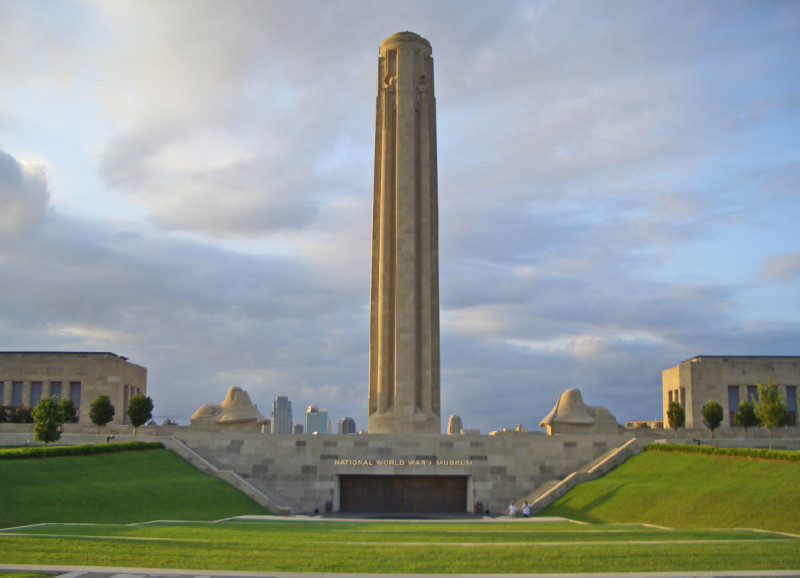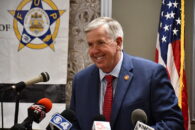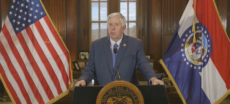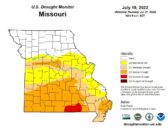JEFFERSON CITY, Mo. – Gov. Jay Nixon signed an executive order directing Department of Public Safety (DPS), Adjutant General and Missouri Veterans Commission to help plan and implement activities honoring the service and sacrifice of WWI veterans on Friday.
Nixon directed the DPS to collaborate with the Missouri Veterans Commission and the Adjutant General of the Missouri National Guard, Maj. Gen. Stephen L. Danner, to assist in planning and implementing a series of events commemorating the centennial of World War I, including events at the National World War I Museum and Memorial. The Museum and Memorial, located in Kansas City, is the country’s leading institution dedicated to remembering, interpreting and understanding the Great War and its enduring impact on the global community.
The first global conflict, World War I began in 1914 and ended in 1918. The participation of U.S. troops beginning in 1917 was instrumental in turning the tide for the European Allies and bringing the war with Germany to a close. Of the more than 156,000 Missourians that served in all branches of the military during World War I, nearly 7,000 were wounded and 3,644 were killed. Five received the Medal of Honor, America’s highest military honor, awarded for personal acts of valor above and beyond the call of duty; 165 were given the Distinguished Service Cross, the nation’s second highest military honor.
“This Memorial Day weekend – and every day – it is important to remember that the peace and liberty we enjoy today were paid for by the blood and sacrifice of our brave men and women in uniform,” Gov. Nixon said. “As the commemoration of the Centennial of World War I continues, there is no more fitting place to honor and preserve the history of their valiant service to our country than the National World War I Museum and Memorial, here in the Show-Me State.
“The ‘War to End All Wars’ and its legacies still hold a place of keen interest in the minds of many Missourians, as well as people from across the country and around the world,” Gov. Nixon said. “Our National World War I Museum and Memorial offer much for them to see and experience, and our state will have an important role in preserving our heritage.”
The Kansas City museum contains the foremost collection of World War I artifacts and historical information in the United States. Soon after World War I ended, Kansas City leaders formed the Liberty Memorial Association (LMA) to create a lasting monument to the men and women who had served in the war. In 1919, the LMA and citizens of Kansas City raised more than $2.5 million in just 10 days. The equivalent of roughly $34 million today, this staggering accomplishment reflected the passion of public sentiment for the Great War that had dramatically changed the world.
In 1921, more than 100,000 people gathered to see the supreme Allied commanders dedicate the site of the Liberty Memorial. This was the first time in history these five leaders – from the United States, Great Britain, France, Italy and Belgium – were together in one place.
Missouri is home to many World War I leaders, including General of the Armies John Joseph “Black Jack” Pershing, of Laclede, who led the American Expeditionary Forces to victory over Germany. Pershing shifted 600,000 American soldiers to the heavily defended forests of the Argonne in France, keeping his divisions engaged in hard fighting for 47 days. That victory was one of several factors causing the Germans to call for an armistice, although Pershing himself wanted to continue the war, occupy all of Germany and permanently destroy German militarism. Pershing is the only American to be promoted in his own lifetime to General of the Armies, the highest possible rank in the army.
Missourian and future President of the United States Harry Truman served on the front lines of the war as well, commanding an artillery unit from the Missouri National Guard – Battery D, of the 2nd Battalion, 129th Field Artillery.
The last living U.S. World War I veteran, Frank Buckles, was born on a farm near Bethany in 1901. He enlisted in the Army as a 16-year-old, lying about his age in order to join up, and served as an ambulance driver in France. Buckles died in 2011 at the age of 110 and is buried at Arlington National Cemetery.
Executive Order 16-05 directs Missouri officials to work with the national World War I Centennial Commission, created by President Barack Obama in 2013, to plan and implement a series of events to commemorate the centennial, ensuring that Missourians are exposed to the history of World War I.












